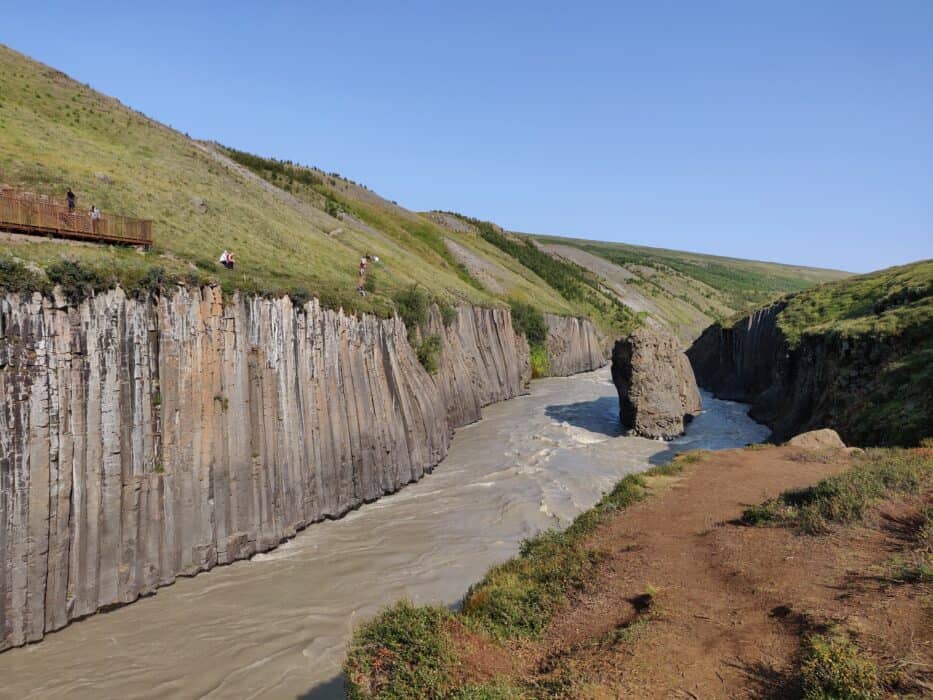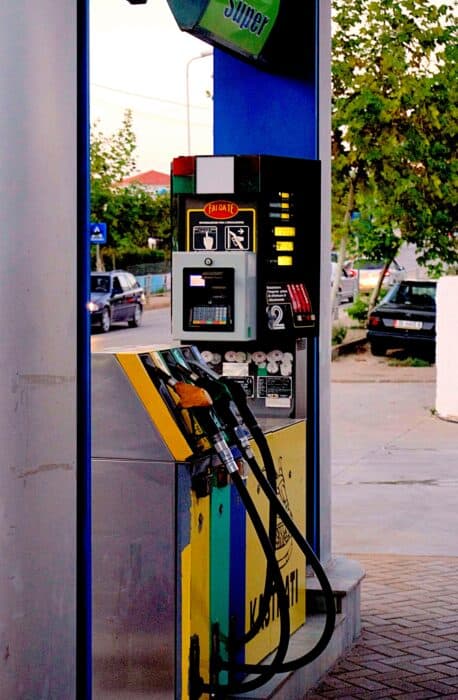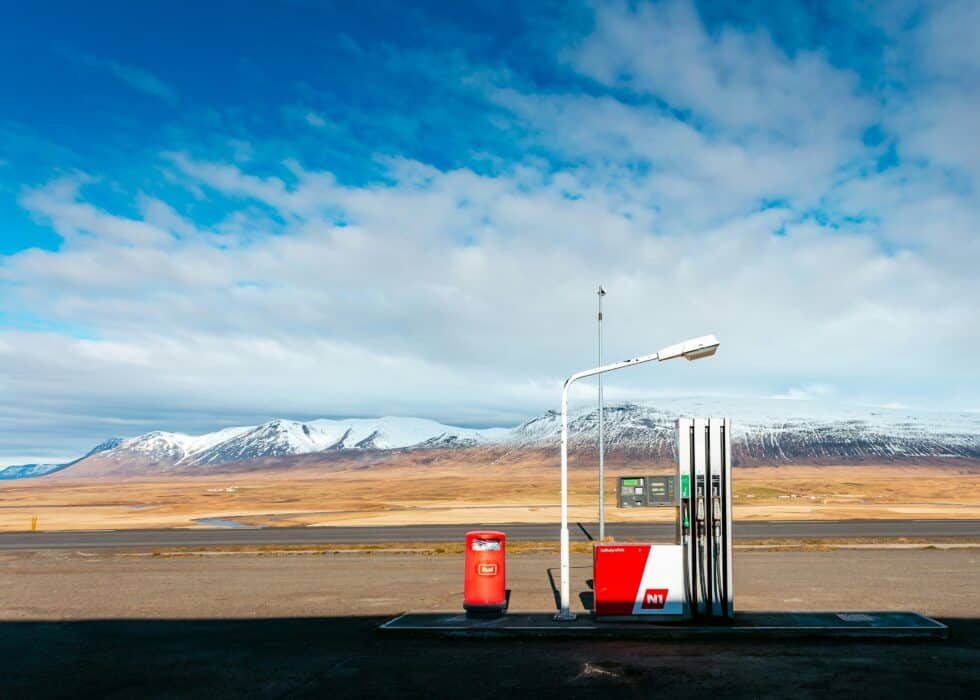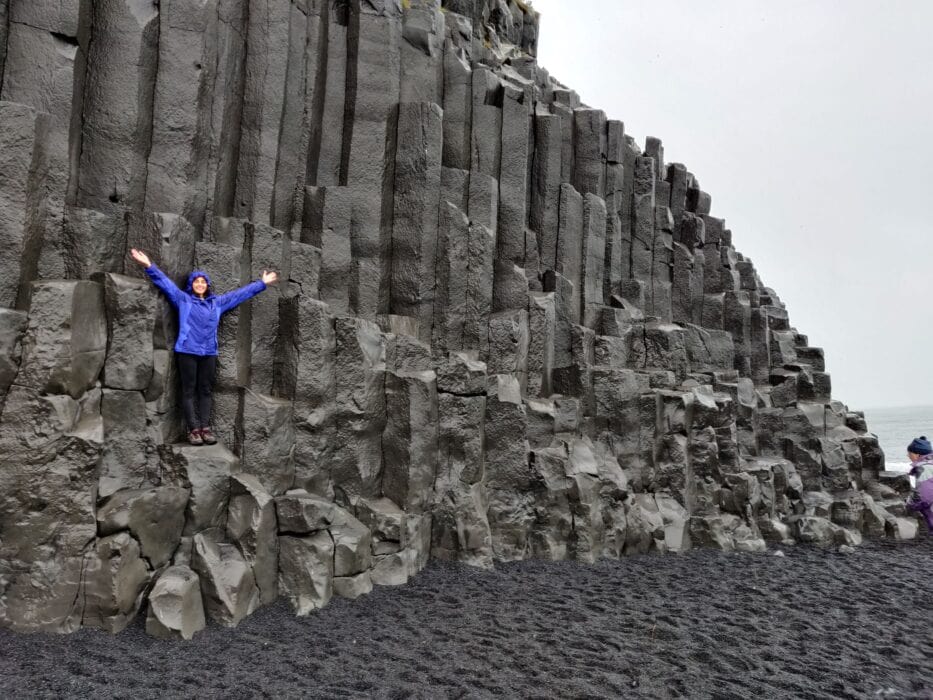Iceland Fuel Prices in 2025 – Fuel Costs on the Ring Road
Disclaimer: This post may contain affiliate links, which means I may earn a small commission if you make a purchase at no additional cost to you. I only recommend products and services that I would use myself and all opinions expressed here are my own. You can read my full privacy policy here.
Are you planning a road trip to Iceland? Whether you’re driving the famous Ring Road or exploring the Golden Circle, understanding fuel prices in Iceland is essential for budgeting your trip. Iceland is known for its stunning landscape and the famous ring road however Iceland being a remote country also has some of the highest fuel costs in Europe. We recently spent time in Iceland over 10 days completing the ring road in a campervan driving across the country. The below guide is based on my own experience are there road trip to Iceland in this guide we’ll break down the current fuel prices, where to fuel up in Iceland where to find discounts and how to manage field expenses during your Icelandic road trip.

Which type of car should you rent in Iceland?
Petrol and Diesel cars
In Iceland, there are primarily two types of fuel used (1) Petrol (gasoine and (2) Diesel for rental cars. Petrol is most commonly used, however diesel powered cars are still popular amongst locals and travelers driving larger cars like campervans and 4×4 vehicles for off-road driving.
Diesel tends to be slightly cheaper than gasoline however not all rental car companies offer diesel cars so it’s important to verify what type of fuel you can use when booking your rental car or camper van.
Electric Cars
Electric are gaining popularity in Iceland especially in urban areas like Reykjavik. As a result charging stations for EVs are also becoming more common with networks like on power and a forecast expanding through the country with charging stations.However, if you plan to venture into more remote areas or explore Iceland’s rugged highlands, access to charging stations can be limited.

Gas Stations in Iceland
Diesel a widely available across Iceland my trip has taught me that it’s crucial to plan ahead if you’re driving outside of the main cities. In rural areas fuel stations are scarce and there may only sometimes offer one type of fuel. Additionally you may also find that many of the fuel stations and Iceland can often be unmanned and require a credit or debit card with pins to make the payment.
From experience I found that it was always better to plan out a few potential fuel stops further ahead before heading out into rural areas. We often found that mobile coverage was unpredictable in these areas hence you cannot guarantee that you’ll be able to get cell coverage to look up upcoming fuel stops on your route if you are in more remote areas.
Fuel Stations in Iceland
The main fuel station chains in Iceland are:
N1
N1 is the largest chains of fuel stations, with many locations across Iceland. They offer a range of services, including car maintenance, food, and rest areas. N1 is convenient given its literally easy to find in most places, however, it tends to be a bit more expensive than someof the smaller chains.
Olís
Olis is another large chain of fuel stations with services similar to N1. Olís is also known for having good loyalty programs and discounts, which are worth looking into if you are spending significant time in Iceland
Orkan
Orkan is a good budget option when it come to fuel prices. It is known for having self-service stations, so be prepared for this. They conviently list out their locations across Iceland here.
ÓB
Often the cheapest option, ÓB is a self-service station that generally offers fuel at cheaper prices compared full service chains like N1 and Olís.
Overall, N1 is more widely found along the Ring Road however its worth fueling up at the cheaper alternatives like Orkan OB when you do find these.
Iceland Fuel Prices in 2025
As of 2025, fuel prices in Iceland are actually some of the highest in Europe. Costs are further driven up by taxes as well as Iceland’s remote location.
In Iceland, the average cost of gasoline (petrol) is around 320 Icelandic Króna (ISK) per liter ($2.30 USD / €2.10).
The average cost of diesel costs approximately 300 ISK per liter ($2.15 USD / €2.00).
** These prices can vary depending on the location and time of year, with rural areas typically being more expensive.

Tips for Finding Fuel Stations in Remote Areas in Iceland
Make sure you bookmark a few places in advance enroute as potential fuel stops, in case you dont have the ability to do so due to lack of mobile network in the more remote areas.
I found there are several useful tools and apps can assist with this. One such one that I came across (unfortunately after my Iceland trip) was Gasvaktin. This app shows you fuel station locations, compares Iceland gasoline prices across different service stations, and even provides reviews from other travelers. I personally didn’t know about this app until after my visit to Iceland, but it definitely looks worth downloading in advance of visiting Iceland.
If you are heading into the Iceland highlands, the west Fjords. or other less-traveled routes, it’s best to err on the side of caution and fuel up the tank earlier than you would otherwise, especially if you end up on an F-road.
I highly recommend keeping an eye on your fuel gauge and fill up well in advance before it gets too low. There was one point in our road trip where we somehow accidentally ended going the wrong way on an an F road with the fuel light flashing and no mobile coverage! We couldn’t believe how quickly the fuel dipped from low to emergency levels, and honestly were just holding our breaths till we joined back up with a regular road and finally reached a fuel stop! This is not an experience I would ever want to repeat, so I highly recommend not risking a long stretch without fueling up first, especially when you don’t know when the next fuel stop is, and cant guarantee that fuel station will necessarily be open.
Gas Cost Approximation for an Iceland Road Trip
I found fuel costs to be a significant part of the budget for my Iceland road trip in Iceland.This will typically be the case, especially if you’re covering long distances and doing the Ring Road around Iceland.
Golden Circle
This popular day trip from Reykjavik covers about 230 km (143 miles). With an average vehicle fuel consumption of 8 liters per 100 km, you can expect to use about 18-20 liters of fuel, costing roughly 5,760 ISK to 6,400 ISK ($42-47 USD / £33-37).
Ring Road
Covering the entire Ring Road (about 1,332 km or 828 miles) is a much longer journey. For the same vehicle, this would consume around 107 liters, costing approximately 34,240 ISK ($250 USD / £200).
Any detours, off-road driving on F roads, and stops along the way will add to the base total distance and fuel consumption noted above. I would also add in any additional distances to / from accommodation on top.
One thing I can definitely say about driving in Iceland is that no matter what attractions you plan to stop in a day,
Even if you only plan on visiting the more iconic stops along the Ring Road like Dettifoss, Gullfoss and Seljalandsfoss, you will ALWAYS end up stumbling across stunning scenery that has you stopping or heading on detours for photos! This was a daily occurance on our 10 day Iceland road trip, so I highly recommend leaving an additional time AND a mileage buffer for this!

How to Budget Fuel Costs for Long Road Trips
- Calculate your total distance: Plan your route in detail, including major stops and potential detours – including accommodation, restaurants, grocery stores along the way.
- Estimate your fuel consumption: Check your vehicle’s fuel efficiency (usually measured in liters per 100 km). Multiply the total kilometers by the fuel consumption rate.
- Factor in current fuel prices: As of 2025, this would be around 320 ISK ($2.35 USD) per liter for gasoline and 300 ISK ($2.20 USD) per liter for diesel
- Allow buffer for unexpected detours / roadworks and traffic,especially if you plan on exploring the rural or off-road areas.
For example, a 10 day road trip completing the Ring Road could cost about 35,000 ISK ($250 USD / £200) for fuel in a medium sized car.
Tips to Save on Fuel Prices in Iceland
- Compare Fuel Prices: Use apps like Gasvaktin to find the cheapest fuel stations on your route
- Utilize Discounts/ loyalty programs: Especially if you are staying in Iceland for a while. Places like Orkan loyalty programs for cheaper fuel.
- Steady speed: Maintain a steady speed, using cruise control, and plan your routes to avoid detours.
- Plan your refuel in cities whenever possible: Fuel is cheaper in the larger towns and cities like Reykjavík.
- Rent Efficient Vehicles: Always check the fuel efficiency on the car you plan to hire or go for a fuel-efficient or hybrid unless you need a 4×4 for your route. Campsites due to limited supplies, can typically charge extra for EV charging.
- Charge your EVs for Free: Use the free EV charging stations at supermarkets (check in advance where this is possible) as well as at hotels.
- Fuel up before heading into more remorse areas and also refuel often / where possible in these areas.
So there you have it I hope the above guide has been useful in gearing you up for a road trip around Iceland. I hope you enjoy road tripping around the land of fire and ice as much as I did!
Are you heading to Iceland? Check out our other posts on Iceland below –

